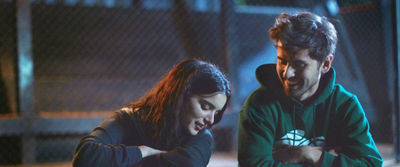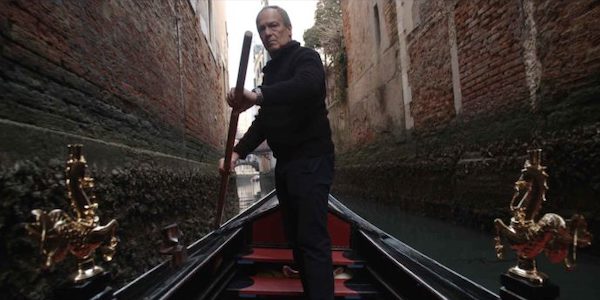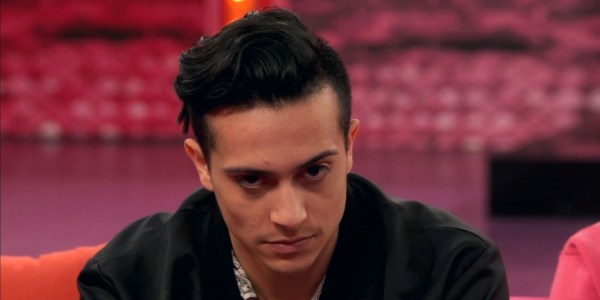It Was Great To Play An Actual Cartoon!: Fifteen Minutes With Paul Dooley on Popeye
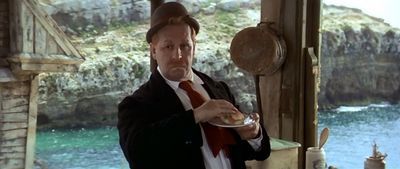
This week, Paramount Home Video releases a Blu-ray of Robert Altman’s “Popeye,” one of the most unusual pictures in a filmography that’s already as far from conventional as Hollywood bodies of work get. For the loose, often acerbic Altman to take on a musical movie focused on an eccentric group of fantasy characters that originated in an early-20th-century comic strip seemed counterintuitive at first. But “Popeye” is both an exemplary Altman movie and an apt tribute to the vision of E.C. Segar and the Fleischers who made animated shorts about the spinach-loving Sailor Man. The production was beset by peculiar situations, the hyper presence of Robin Williams in the title role being one of them, and the critical reception of the picture was mixed to say the least. But it not only holds up—it’s a latter-day cult classic whose cult should only expand with this edition.
The great comedic actor Paul Dooley played the slow-moving, smiling, conniving hamburger lover Wimpy in the picture. Just as Shelley Duvall was an incredible physical match for Olive Oyl, so too did Dooley seem to exemplify Wimpy—despite his misgivings about his potential appearance in the movie, as we’ll see below. Dooley is now 92 (although his voice, which has the same familiar genial tone it had in his ‘70s and ‘80s films, doesn’t betray his age at all) and still working, and in demand, as an actor. And as an interview subject, too: for my chat with the formidable actor, I was held to a strict 15-minute limit. Our conversation, mostly as it took place save for some editing and slight condensation, is below. He began with a personal note.
“This holiday will be lonely,” he observed, when I asked about his plans (we spoke on the eve of the holiday) “but it’ll be Thanksgiving. My wife is here, we’ll have a little holiday of our own. By the way, Roger was always very kind to me. When I did a tour of the country, promoting ‘Breaking Away,’ he did a profile of me, and so did Gene Siskel. And they both gave us a great review for ‘Breaking Away.’ Very friendly sound to me, to hear about RogerEbert.com.”
You had done a few films with Robert Altman prior to “Popeye,” including “A Perfect Couple,” which was one of your first lead roles, and romantic lead to boot.
I didn’t have too many starring roles, because I’m a character actor. Bob gave me almost five movies in a row. I told a friend when I was going to do the first one, “If I don’t do something wrong, I’ll probably be in more than one Altman movie.” Because he tends to have a stock company. A repertoire of people he liked to work with. Shelley Duvall did six or seven or eight. Keith Carradine did a lot of them. He loved to find people he liked to work with, and keep doing things with them.
“Popeye” had a whole different context. It wasn’t an original Altman idea, it was an iconic comic strip and cartoon, and yet you, and Shelley Duvall, and some others from that stock company landed in that world. Shooting in Malta, in a very unusual situation. [The set that was constructed in Malta for this film is still standing, and is now a tourist attraction.]
Yeah, it was. Bob’s other movies were much more realistic. I once asked Robert Evans, who was the producer and who visited Malta a couple of times, I asked him, “How did you think of Bob for this?” And he said, “We thought he had a talent, based on seeing things like ‘McCabe and Mrs. Miller,’ of going into a place where there was nothing, building a small town, and making it look like it had been there forever. And putting a bunch of different characters and making it fascinating.” And Evans thought that Altman could do that for “Popeye,” too. And he did!
How did you prepare for the role of the benign-seeming, but in fact hungry and conniving, Wimpy? Was it the EC Segar strips or the Fleischer animated cartoons that inspired you?
As it happens, from 12 years old on, I was a boy cartoonist. I followed all the cartoons in all the magazines, read the comics every Sunday. I vividly remember scenes from the comic strip. And I remember scenes from the strip being in the movie. Especially when Popeye finds his father. Jules Feiffer, who wrote the script, was also a boy cartoonist and he had a similar experience to my own. It was great, given my past as a wannabe cartoonist, to play an actual cartoon
Jules Feiffer of course went from boy cartoonist to famous cartoonist and screenwriter. Did you have a lot of exchanges with him on the set?
Oh, I’ve done two shows with Feiffer, one based on his strips, another called “The White House Murder Case.” He’s a good friend. I used to live across the street from him in New York, on West End Avenue. I still talk to him on the phone. A fascinating guy. One of his first heroes was Will Eisner, who he later worked with on “The Spirit.” A very talented guy. He went from a weekly comic strip in the Village Voice to Broadway shows, to “Carnal Knowledge.” Won a Pulitzer, finally, as a political cartoonist.
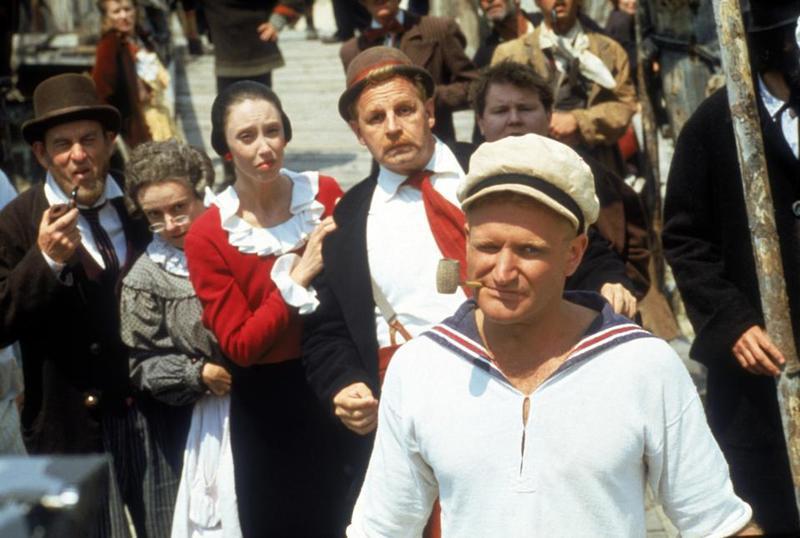
The set of “Popeye” has been painted as chaotic. In Robert Evans’ memoir he discusses his own criminal mischief that was peripheral to the production. What was your experience of it?
I’ve been speaking about this movie for its anniversary and I’ll always say, I never saw chaos. Through five sets and five films with Altman, I never saw chaos. What they might describe as chaos I called spontaneity. And freedom. And the ability to try things and do spur of the moment things. It was always a big fun party. He started with every actor there on the first day of the film to the last. Which had never been my experience of a movie, you know. Because you generally are on call for a couple of days, or a week, or what have you. Bob wanted to keep everybody there for the whole time. Because he wanted that festive collegial summer theater, summer camp feeling around. Because, he said, if he were to do it in the traditional way, “I may want to put you in something next week and you won’t be here.” So he’d sometimes say, “Come on set tomorrow, I want you for this scene.” And you’d look at the scene and say, “I don’t have any dialogue.” And he’d say, “Doesn’t matter, we’ll come up with something.” The chaos might come from the studio, which didn’t like his methods, sometimes. Bob told me that when he did television, for the first few years, he was fired from every show for having a muddy soundtrack. Because he wanted to have it sound like a real conversation, with real people. And it was always too muddy for the studios, who wanted every line to be clean. But Bob felt that’s not what real life was like. And that was a hall mark of how his actors work.
What about the musical aspect? The movie’s songs by Harry Nilsson are really charming.
I did have a song as Wimpy but in the process of editing they lost the song. The other day someone told me they knew how to find it, and I’d like to find it and listen to it. It’s about Wimpy being a con man, which he is. After all, he sold Swee’ Pea for a bag of hamburgers.
I had one fear doing Wimpy: I didn’t want to look like Oliver Hardy. I was a fat man with a small mustache and a derby. And I love Oliver Hardy but I did not want to look like him here. Because I could never be him. I wanted to be different and it worked out fine.
Shelley Duvall had just come from shooting “The Shining,” with Stanley Kubrick, an experience that was pretty tough for her.
Kubrick was a very exacting guy. She told me about him directing Scatman Crothers, how he did 70 takes of a guy in his 70s. And it wasn’t even a line of dialogue. It was a long shot, of him walking toward the camera, and doing little bits of business. And Crothers had to do it for two days. Very, very exacting director.
Shelley was discovered by Bob, she had never been on the stage or on television. He found her down in Texas, in preproduction for “Brewster McCloud.” She was a tour guide in a museum. And he was very struck by her look. Big eyes, long neck; something very elegant about her looks. And in the right light she could look kind of beautiful but in a different light she could look strange. She told me that when she was in middle school the other kids used to call her Olive Oyl, so this was very apt casting, It was meant to be. She was more perfectly suited than Robin was, only because nobody had ever looked like Popeye, with his great big jaw and his bulging arms. And she did a great job.
Ray Walston, who’d been in South Pacific on Broadway, he could sing, a good comedian, a good actor. It was a delight. We never wanted it to end. We’d all take our phone numbers. And I’d go back to the next Altman movie and there’d be half the previous crew, half the prior cast. So it was a really great connection. It created for me a film career and at the same time gave me a second family. And he also gave his actors a lot of freedom, which actors like. I had trained in improv with Second City, and I used a lot of that when working with Altman.
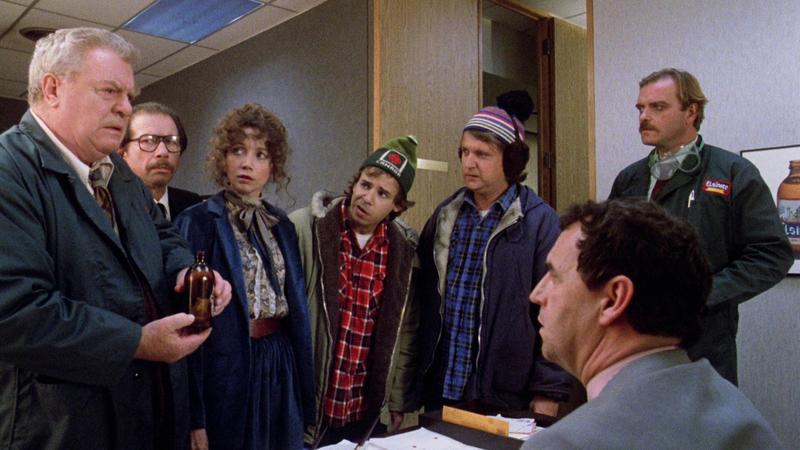
Speaking of Second City, not too long after “Popeye,” you made a couple of films with different members of the SCTV people. “Going Berserk,” with John Candy and Joe Flaherty, and “Strange Brew,” with Dave Thomas and Rick Moranis.
“Strange Brew,” I liked that movie. Imagine working with Max Von Sydow. I asked Max why he would do a comedy like this—he’s known so much for drama, with his work with Ingmar Bergman, and he’s played Jesus and the voice of God. He said, “I got a script, it was on my desk”—he was living in Italy at the time—”and my son saw it and said, ‘Oh my God, Doug and Bob MacKenzie, Dad you gotta do this!'”
You have two of my favorite line readings, as the conniving stepfather, based on the character of Claudius in “Hamlet!” One is, “The Colonel is dead, and we’re still enjoying his chicken,” and the other, which seems more relevant every day, is “That’s a time code, that’s very hard to fake.”
And then he also says, when the judge asks him to explain what a time code is, “I don’t know. It doesn’t mean I’m lying.”
You got together with Altman one last time, in a cameo for “The Player.”
I was only there for one scene. I remember standing between Susan Sarandon and Peter Falk and looking at my watch to give a signal to execute Julia Roberts! But it was old friends’ week, because there were 20 or 30 cameos, Burt Reynolds, Ray Walston, so many people from his other films. I had no lines, just a gesture. But I would do anything for him. Just anything.
To order your copy of “Popeye” on Blu-ray, click here.

